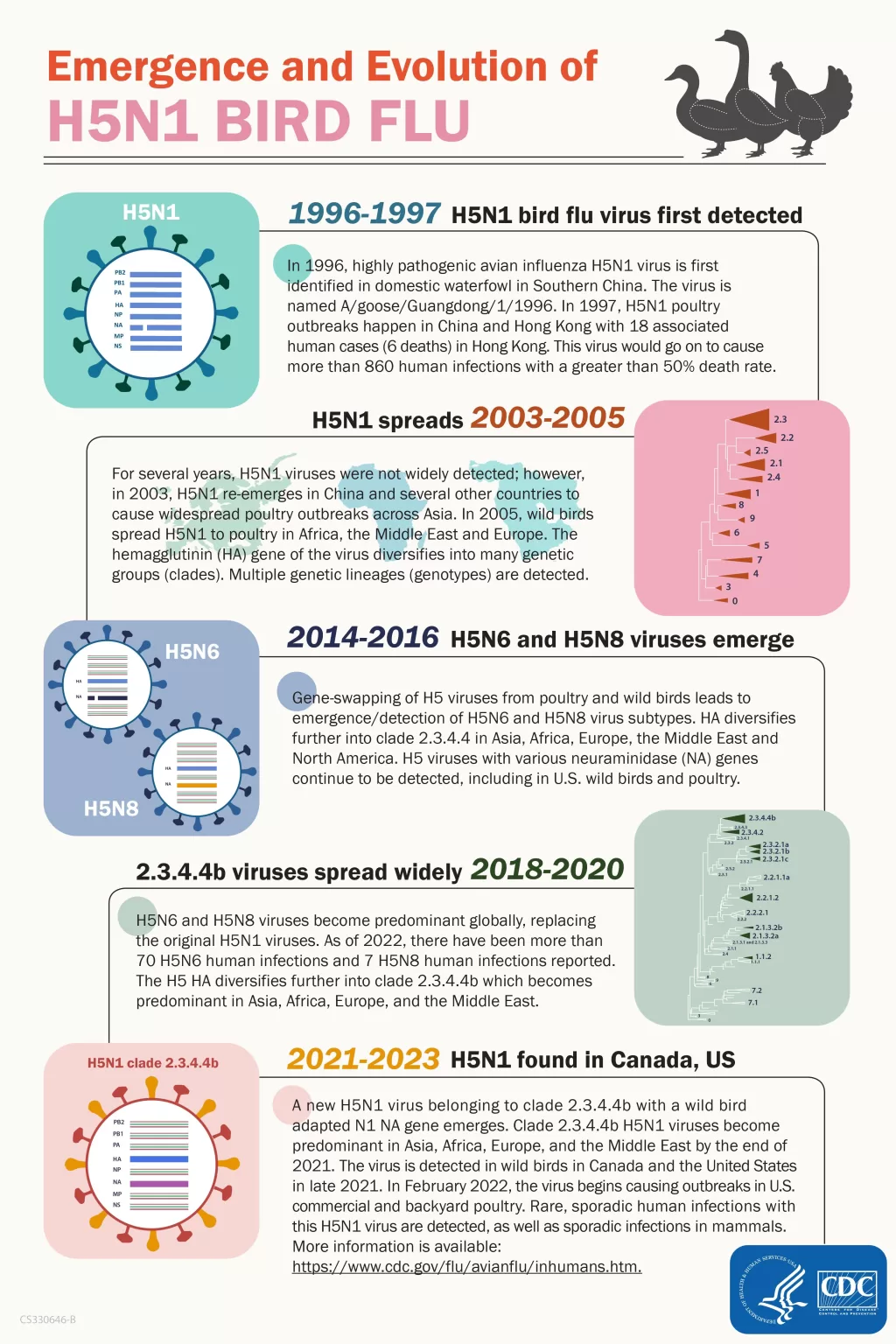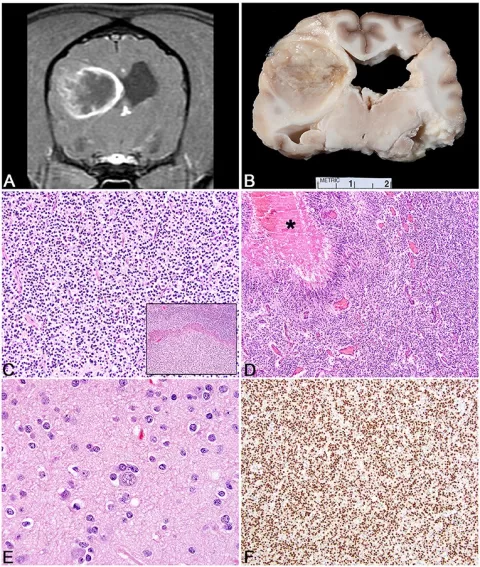H5N1 bird flu has recently emerged as a significant health concern following the tragic death of a 2-year-old girl in Andhra Pradesh, marking the state’s first confirmed human case. The child is believed to have contracted the virus after consuming raw chicken, a reminder of the vital importance of understanding bird flu symptoms and effective H5N1 prevention tips. This incident has reignited discussions about avian influenza facts and the risks associated with eating undercooked poultry. As health officials investigate the outbreak, the potential risks of raw chicken highlight the need for heightened awareness and food safety practices. With recent outbreaks of bird flu in various regions, including Andhra Pradesh, it’s crucial to stay informed about this virus and its implications for human health.
The recent case of avian influenza, commonly known as bird flu, has sparked renewed interest in its implications for public health. Often associated with widespread outbreaks in populations of domestic and wild birds, the H5N1 strain of the virus can sometimes jump to humans, leading to severe health outcomes. In light of recent events, it is important to consider avian flu symptoms, effective measures for H5N1 prevention, and the necessary precautions regarding raw poultry. The concerning impact of improperly cooked raw chicken has been brought to the forefront, particularly following the unfortunate incident in Andhra Pradesh. As this virus continues to be monitored, understanding the facts and risks associated with avian influenza is essential for protecting both individuals and communities.
Understanding H5N1 Bird Flu Symptoms
Bird flu, specifically the H5N1 strain, presents a range of symptoms that can be severe and life-threatening. In most cases, initial signs include a high fever, cough, sore throat, and muscle aches. As the infection progresses, it can lead to more severe respiratory issues, such as difficulty breathing and pneumonia. This was sadly exemplified in the case of a 2-year-old girl from Andhra Pradesh, who displayed symptoms like high fever and severe cough before hospitalization. Recognizing these symptoms early is crucial for timely medical intervention.
Apart from respiratory symptoms, individuals infected with H5N1 may experience gastrointestinal symptoms including diarrhea and abdominal pain, which can further complicate diagnosis. With limited human cases reported globally, it is often mistaken for other flu-like illnesses. Thus, healthcare professionals must be vigilant in performing tests for avian influenza, especially in regions where poultry outbreaks have been confirmed.
Key H5N1 Prevention Tips
Prevention of H5N1 infection necessitates a proactive approach, especially in areas where bird flu cases are known to occur. Key prevention tips include cooking poultry thoroughly to ensure all pathogens are destroyed. It is recommended that meat, including chicken and eggs, be cooked to an internal temperature of at least 165°F (74°C) to mitigate any risk of infection. This is particularly essential following the emergence of human cases, such as that of the young girl in Andhra Pradesh, who allegedly consumed raw or undercooked chicken.
Furthermore, avoiding contact with sick birds and staying informed about local bird flu outbreaks can significantly minimize risk. Public health measures, such as reporting sick or dead birds, are vital since H5N1 can be transmitted through contact with their droppings or respiratory secretions. Engaging in safe handling practices in poultry markets or farms, including wearing protective gear, is also recommended for those in high-risk occupations.
The Dangers of Consuming Raw Chicken
Consumption of raw or undercooked chicken poses substantial health risks due to the potential presence of harmful bacteria and viruses. These contaminants, such as Salmonella and H5N1, can result in severe foodborne illnesses. The recent incident in Andhra Pradesh highlights the dire consequences that can arise from consuming unsafe poultry products. Foods that are not cooked properly can harbor pathogens that lead to infections, exemplifying the need for strict food safety practices.
To avoid contracting diseases related to raw meat, individuals should adhere to strict cooking guidelines. It is important to separate raw and cooked foods to prevent cross-contamination. In addition, regular hand washing and maintaining a clean cooking environment can diminish the risk of foodborne illnesses. Awareness and education about the risks associated with eating raw chicken are essential for public health, particularly in communities where bird flu has been identified.
Understanding Avian Influenza Facts
Avian influenza, particularly the H5N1 strain, is a viral infection primarily affecting birds but can, in rare cases, infect humans. Understanding its transmission can help in preventing outbreaks. The virus spreads mainly through direct contact with infected birds or contaminated environments. It is crucial to be informed about the migratory patterns of birds, as these can influence the spread of the virus across different regions, including India.
Experts continue to study the adaptability of H5N1, particularly its ability to mutate. Although the World Health Organization indicates that human-to-human transmission is rare, there is growing concern about potential mutations that could enhance this ability. Increased surveillance and research are necessary to understand how to act effectively during outbreaks and to protect both poultry and human populations.
Recent H5N1 Outbreaks in Andhra Pradesh
Andhra Pradesh has had a history of battling avian influenza outbreaks, including the most recent case that resulted in the death of a young child. Reports indicate that H5N1 outbreaks typically peak during winter months when migratory birds spread the virus. Despite claims of eradication in commercial poultry farms, the detection of this human case demands heightened vigilance from health authorities and the community.
Previous outbreaks have instigated significant changes in poultry management and biosecurity measures in Andhra Pradesh. However, the re-emergence of H5N1 in the region signals a need for continual monitoring and public education on avian influenza risks. Public health agencies must work collaboratively with poultry farmers to implement safety protocols to avoid future incidents.
Risks Associated with Avian Influenza in Humans
The transmission of avian influenza to humans remains a critical public health concern, especially with specific strains like H5N1 showing high mortality rates. Although human cases are rare, the potential for serious illness once infected cannot be underestimated. Precautionary measures are essential to minimize risks, particularly in communities where poultry farming is prevalent.
Aside from the immediate health implications for those infected, there are broader societal impacts to consider. The fear of avian influenza can disrupt poultry markets and cause economic strain. Raising awareness about the risks associated with the virus and educating communities on safe food handling practices, along with the importance of detecting and reporting bird flu symptoms, is essential to mitigate overall risk.
Role of Public Health in Preventing Bird Flu
Public health systems play a crucial role in preventing the spread of bird flu and managing outbreaks when they occur. Engaging in rigorous surveillance and reporting systems for bird populations allows health authorities to promptly identify and respond to outbreaks. The incident in Andhra Pradesh serves as a reminder of the need for efficient communication and rapid response protocols to protect public health.
Training and educating healthcare providers about avian influenza symptoms and preventive measures is essential for early detection and treatment. Community awareness campaigns can help inform individuals about the signs of infection and the importance of consuming properly cooked poultry products. By fostering a collaborative approach between health officials, veterinary services, and the public, the risk of H5N1 transmission can be significantly reduced.
Best Practices for Handling Poultry
Implementing best practices for handling poultry is vital in reducing the risk of H5N1 infection. This includes purchasing chicken from reputable sources and ensuring all poultry products are cooked to safe temperatures. Kitchen hygiene is also crucial—hands, utensils, and surfaces should be thoroughly cleaned after handling raw poultry to prevent cross-contamination.
Furthermore, it’s advisable to avoid contact with wild birds and their droppings. Given that H5N1 is predominantly a bird-based virus, separating oneself from potential carriers can diminish the chance of infection. Adhering to such best practices can safeguard personal health and contribute to broader public health efforts in managing avian influenza effectively.
The Importance of Community Vigilance
Community vigilance is essential in the fight against avian influenza. Each individual plays a role in ensuring public safety by remaining alert and actively participating in community health initiatives. Reporting sick birds or unusual avian deaths helps health authorities take necessary actions to monitor and mitigate outbreaks effectively.
Collective responsibility can also drive awareness and foster adaptation of safe food handling practices in households. Educational programs can empower community members with knowledge about H5N1 and its transmission routes. Active community involvement is a cornerstone to preventing the spread of bird flu and protecting the health of both individuals and the wider population.
Frequently Asked Questions
What are the symptoms of H5N1 bird flu in humans?
H5N1 bird flu symptoms in humans can include severe fever, cough, and breathing problems. Infected individuals may also experience fatigue, muscle aches, and complications similar to pneumonia. It’s crucial to seek medical attention immediately if you suspect avian influenza infection, especially after exposure to infected birds or consumption of raw chicken.
How can I prevent H5N1 bird flu through kitchen practices?
To prevent H5N1 bird flu, always cook poultry and eggs thoroughly until they reach safe internal temperatures. Avoid consuming raw or undercooked chicken, as this poses significant risks for infection. Ensure all kitchen surfaces and utensils are clean, particularly after handling raw poultry, to minimize cross-contamination.
What are the risks associated with consuming raw chicken in relation to H5N1 bird flu?
Consuming raw chicken increases the risk of contracting H5N1 bird flu and other foodborne illnesses. The virus can survive in raw meat, and inadequate cooking does not eliminate potential pathogens. It’s vital to always cook chicken properly to reduce the risk of food poisoning and exposure to harmful viruses.
Has there been any reported case of H5N1 bird flu in Andhra Pradesh recently?
Yes, Andhra Pradesh recently reported its first confirmed human case of H5N1 bird flu when a 2-year-old girl died after consuming raw chicken. This incident has raised concerns about the risks associated with bird flu, highlighting the importance of proper cooking and food safety measures.
What should I do if I encounter sick or dead birds concerning H5N1 prevention?
If you encounter sick or dead birds, do not touch them, as H5N1 spreads through the saliva, feces, and mucus of infected birds. Report the situation to wildlife officials and follow local health guidelines to minimize risk. Maintaining good hygiene and avoiding contact with wild birds can help prevent H5N1 infection.
What are the key facts about avian influenza (H5N1)?
H5N1 is predominantly an avian virus affecting birds, but it can also infect humans, often leading to severe illness or death. The virus is primarily spread through direct contact with infected birds or their droppings. While human-to-human transmission is rare, it poses a significant public health concern as outbreaks can occur during bird migration seasons.
What are some effective H5N1 prevention tips for poultry handlers?
Poultry handlers should wear protective gear such as masks and gloves while working with birds. Engaging in regular health monitoring and reporting sick birds to authorities is crucial. Additionally, cooking poultry thoroughly and practicing good hygiene after handling birds are essential prevention measures against H5N1 bird flu.
| Key Points | Details |
|---|---|
| Incident Overview | A 2-year-old girl from Balaiah Nagar, Andhra Pradesh, died from H5N1 after eating raw chicken. This marks Andhra Pradesh’s first reported human case. |
| Symptoms and Diagnosis | The child exhibited severe fever, cough, and breathing difficulties, and was hospitalized where H5N1 was diagnosed. |
| Source of Infection | Health officials suspect the girl consumed undercooked/infected poultry. Her parents remained healthy, indicating the importance of proper cooking. |
| H5N1 Overview | H5N1 is a bird flu virus primarily affecting birds but can be fatal in humans. It spreads through contact with infected birds or consumption of raw poultry. |
| Prevention Tips | Health officials recommend cooking poultry thoroughly, avoiding raw dairy, and practicing hygiene after contact with birds to prevent infection. |
Summary
The recent death of a 2-year-old girl from H5N1 bird flu serves as a critical reminder of the dangers associated with this virus. Human cases are rare, but when they do occur, the results can be severe. It is essential to ensure handling and cooking of poultry is done properly to prevent the spread of the H5N1 virus. Public awareness and adherence to health regulations are fundamental in protecting against potential outbreaks and ensuring food safety.
The content provided on this blog (e.g., symptom descriptions, health tips, or general advice) is for informational purposes only and is not a substitute for professional medical advice, diagnosis, or treatment. Always seek the guidance of your physician or other qualified healthcare provider with any questions you may have regarding a medical condition. Never disregard professional medical advice or delay seeking it because of something you have read on this website. If you believe you may have a medical emergency, call your doctor or emergency services immediately. Reliance on any information provided by this blog is solely at your own risk.







